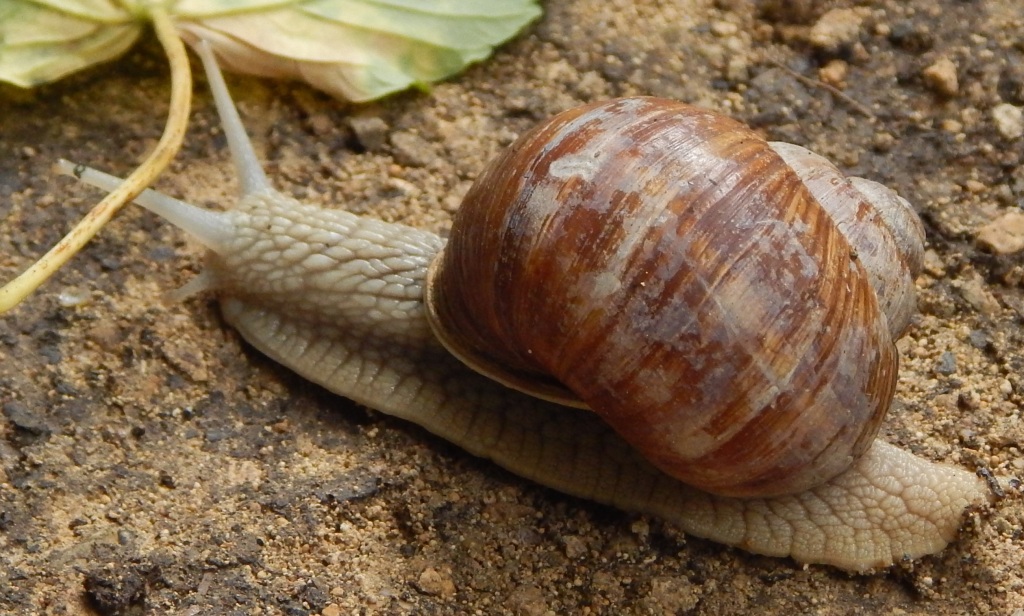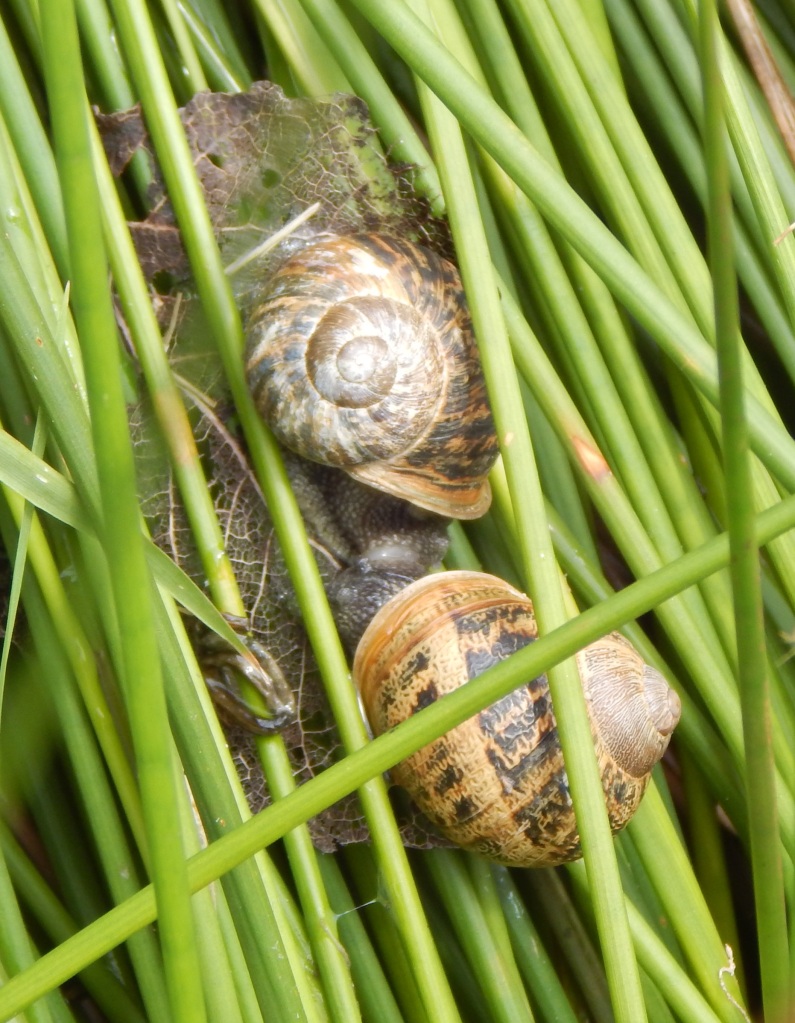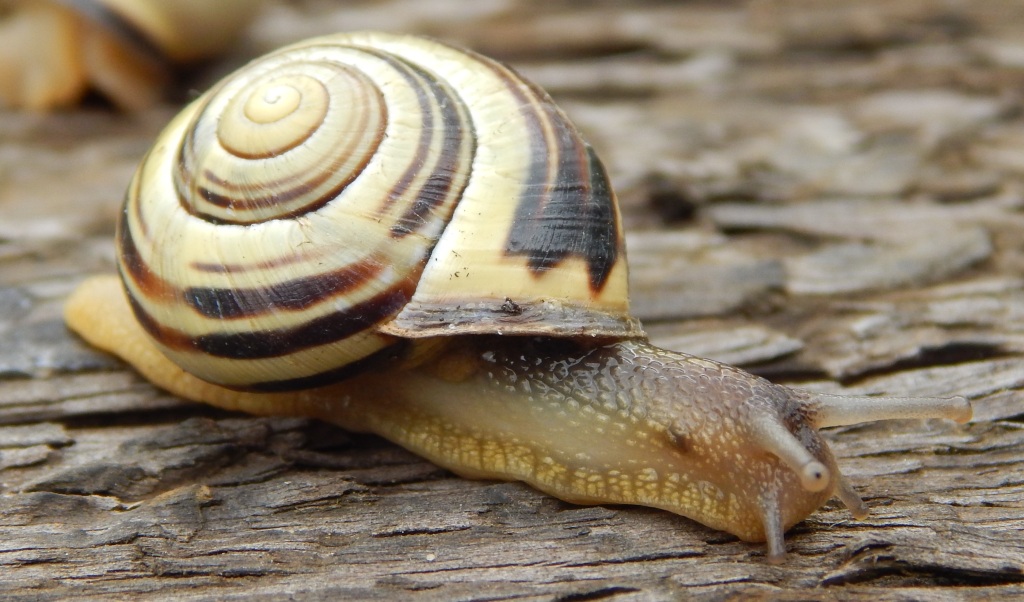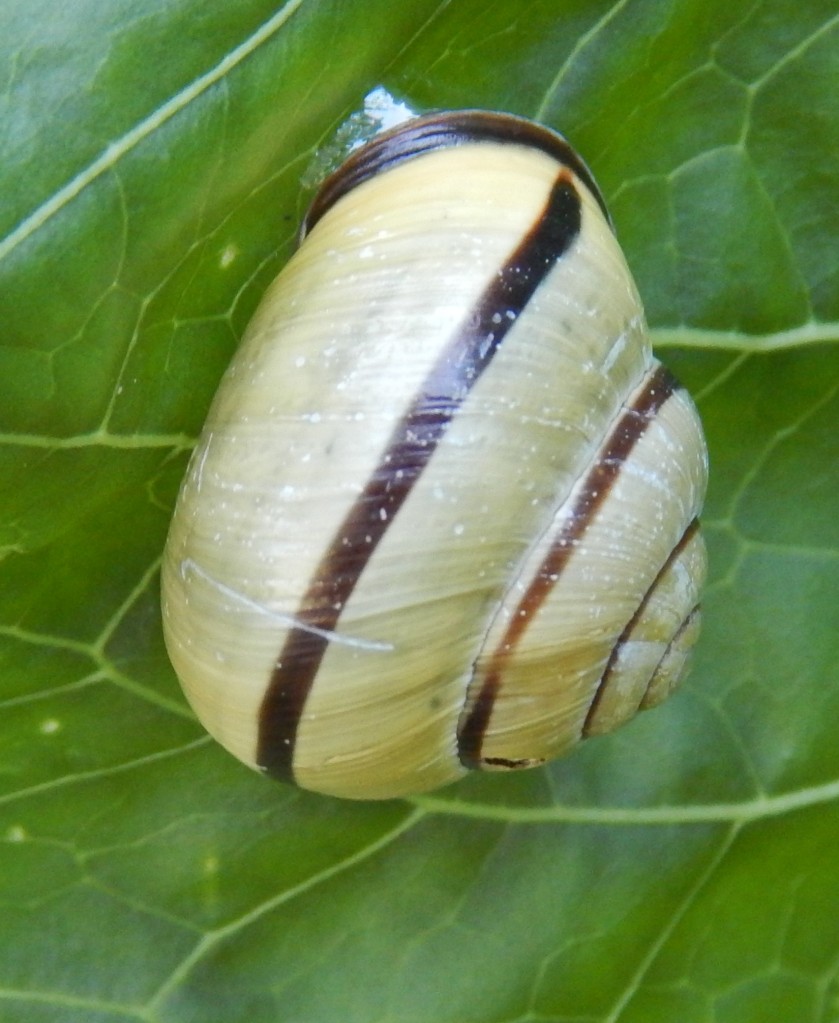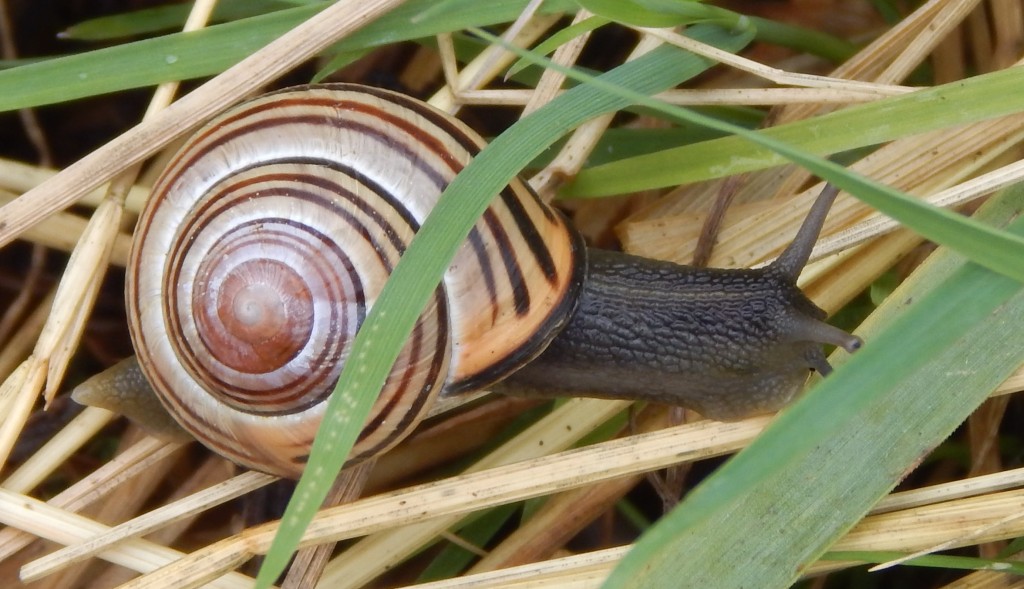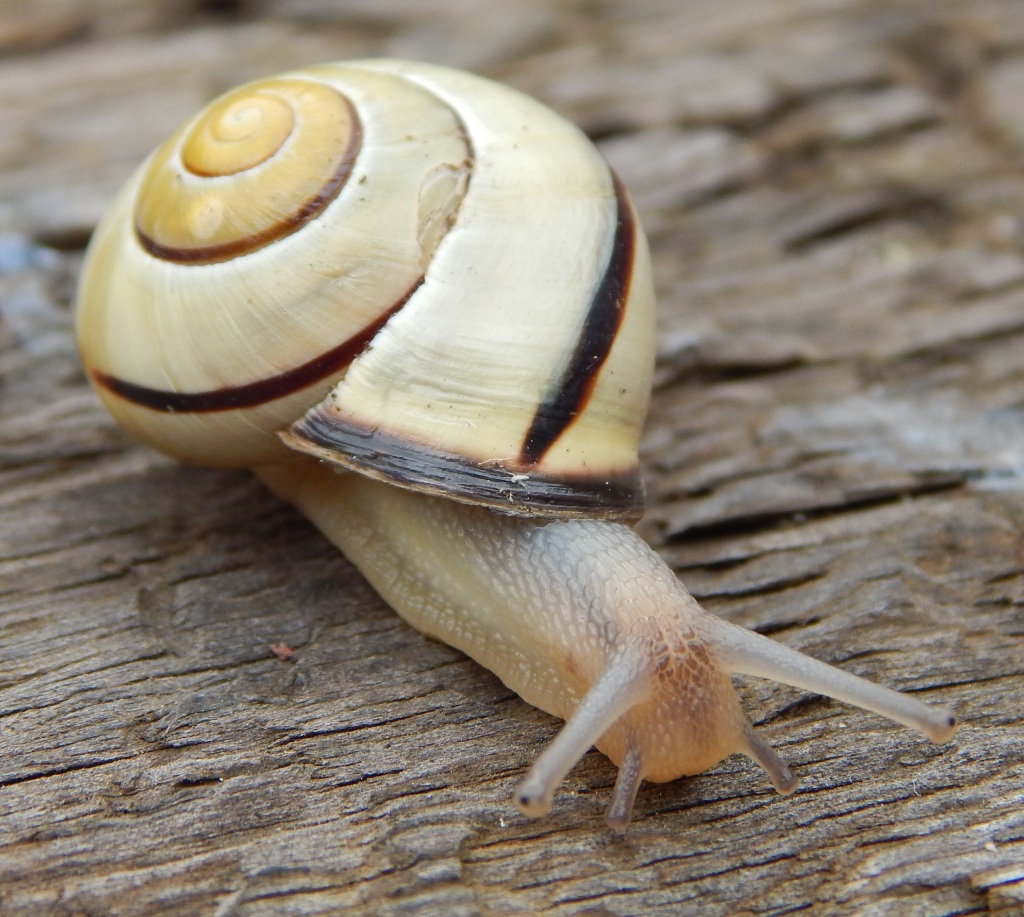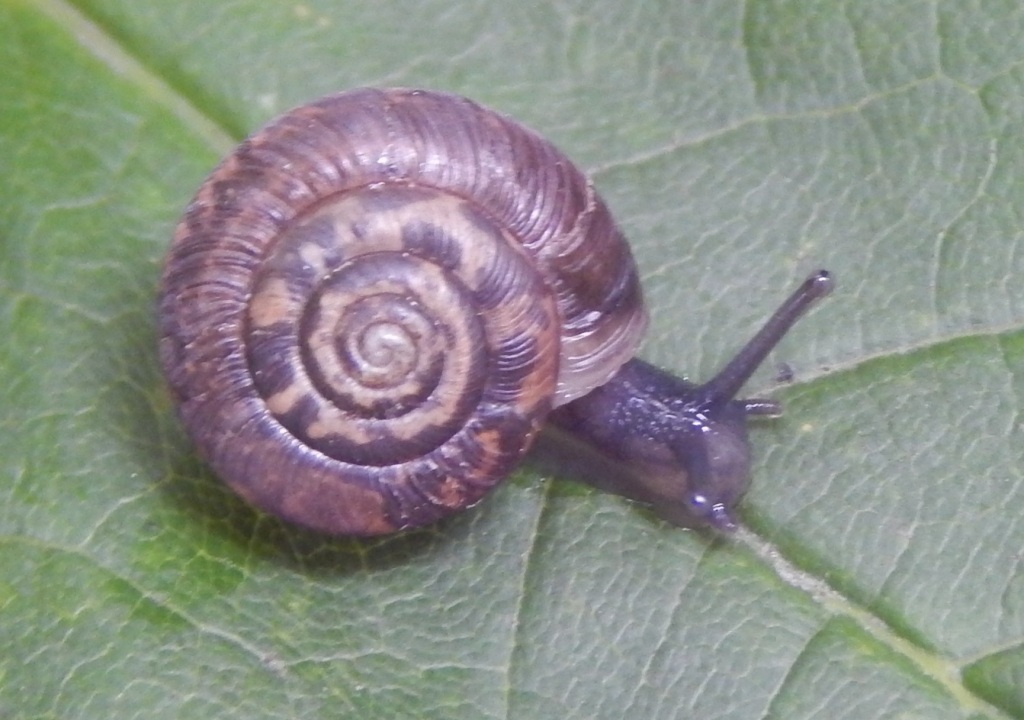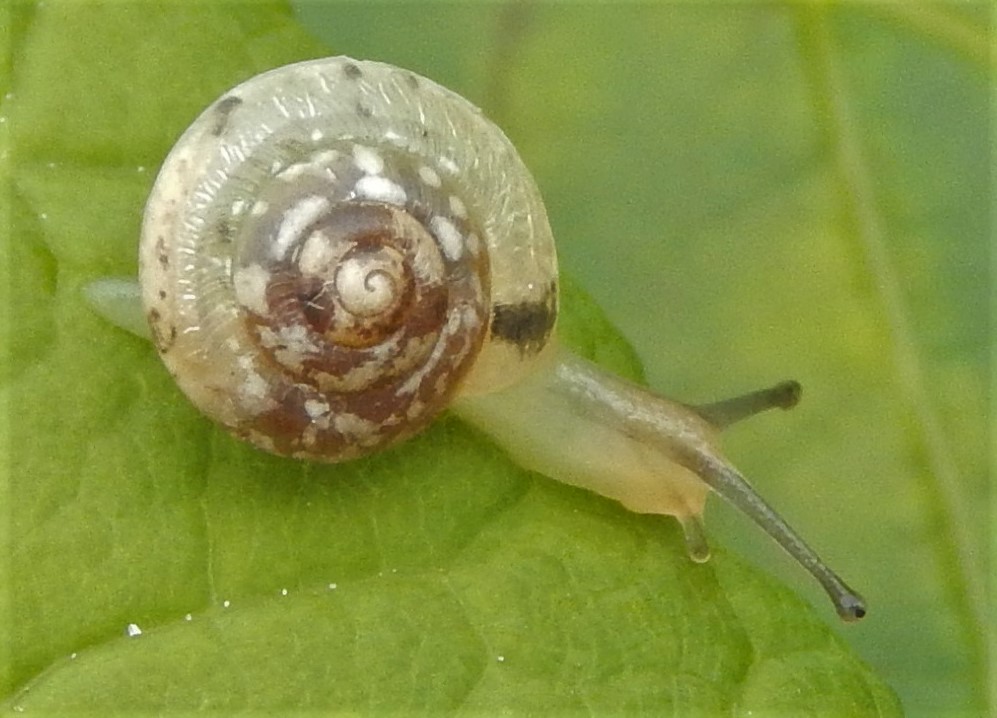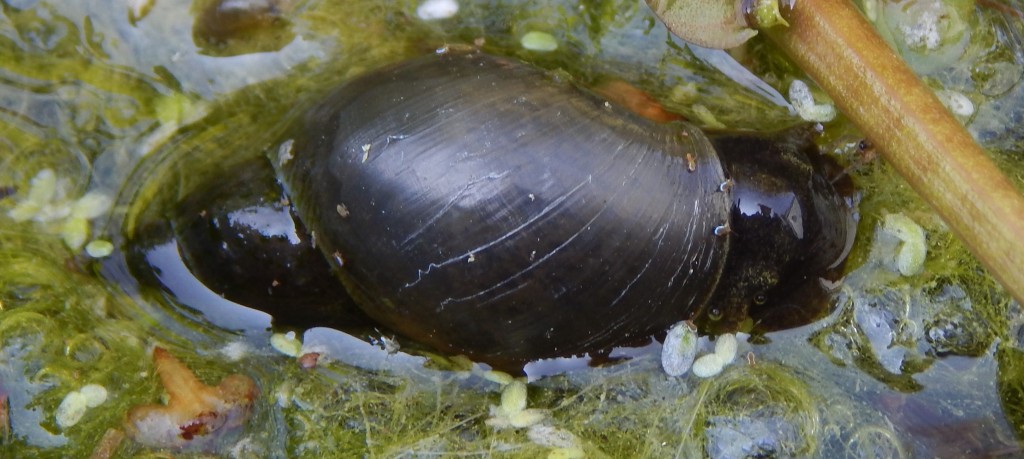
[215] Lymnaea stagnalis, Pond Snail
Introduction
Lymnaea stagnalis, the (Great) Pond Snail is a … … … a snail that lives in ponds!
Taxonomy
Kingdom – Animals
Phylum – Molluscs
Class – Gastropods (Slugs and snails)
Subclass – Heterobranchia
Infraclass – Euthyneura
Clade – Panpulmonata
Superorder – Hygrophila (Air breathing freshwater snails)
(Order – Hygrophila)
Superfamily – Lymnaeoidea (Just Lymnaeidae)
Family – Lymnaeidae
Subfamily – Lymnaeinae
Genus – Lymnaea
Scientific Name – Lymnaea stagnalis
Name
Lymnaea is latinized from Greek limnaios meaning from a marsh or pool. Stagnalis is New Latin for stagnant water or ponds.
Description
The taxonomy of molluscs is complicated and fluid. There are nearly a hundred thousand species of slugs and snails in the class of Gastropods and [172] Roman Snail is a fairly distant relative of Lymnaea. I have called Hygrophila a superorder above but it may be also considered as an unranked clade. It’s at the same level as Stylommatophora, which you will remember we called an Order for the Roman Snail.
Wikipedia insists on Hygrophila being a superorder but doesn’t specify anything corresponding to the level of an order. We can at least say that what distinguishes Hygrophila from Stylommatophora is that the eyes are at the base of the tentacles rather than at the tips. There have been at least four revisions of the taxonomy of pond snails in recent time and more may be coming! By the time we get to Limpets in November it may have changed again but I have already finished that post.
Taxonomy within the family Lymnaeidae is equally fluid but all the levels up to Lymnaeoidea are defined by the type species Lymnaea stagnalis.
I won’t be looking at any other pond snails in this post but there some others found in the UK.
Although Lymnaea stagnalis may be called the Great Pond Snail, it does not look large in comparison to common land snails. Its shell shape is very different – elongated and conical at one end and more rounded at the other. Apart from the shell, it looks like a snail and is grey all over.
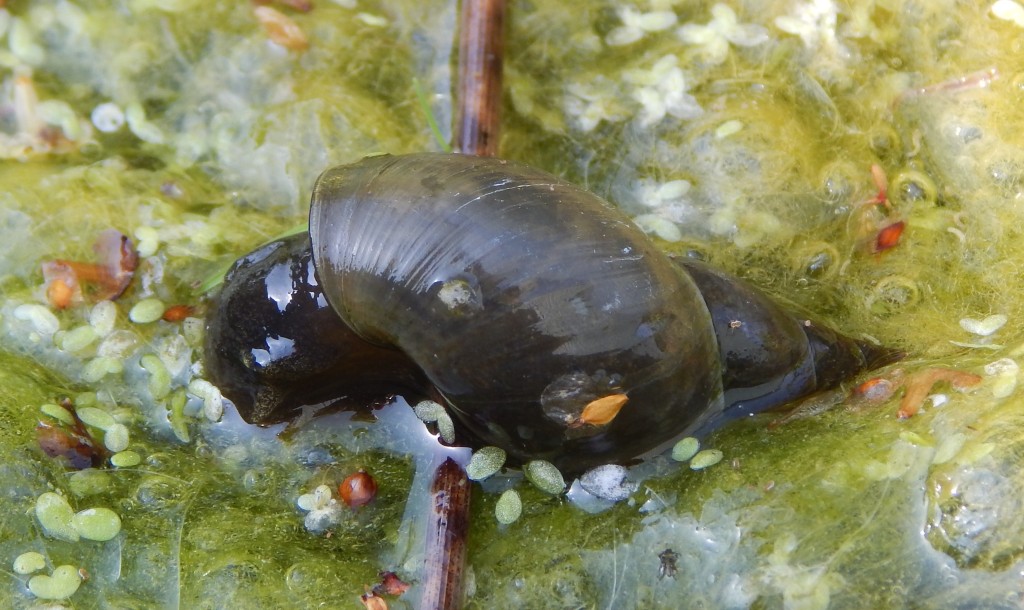

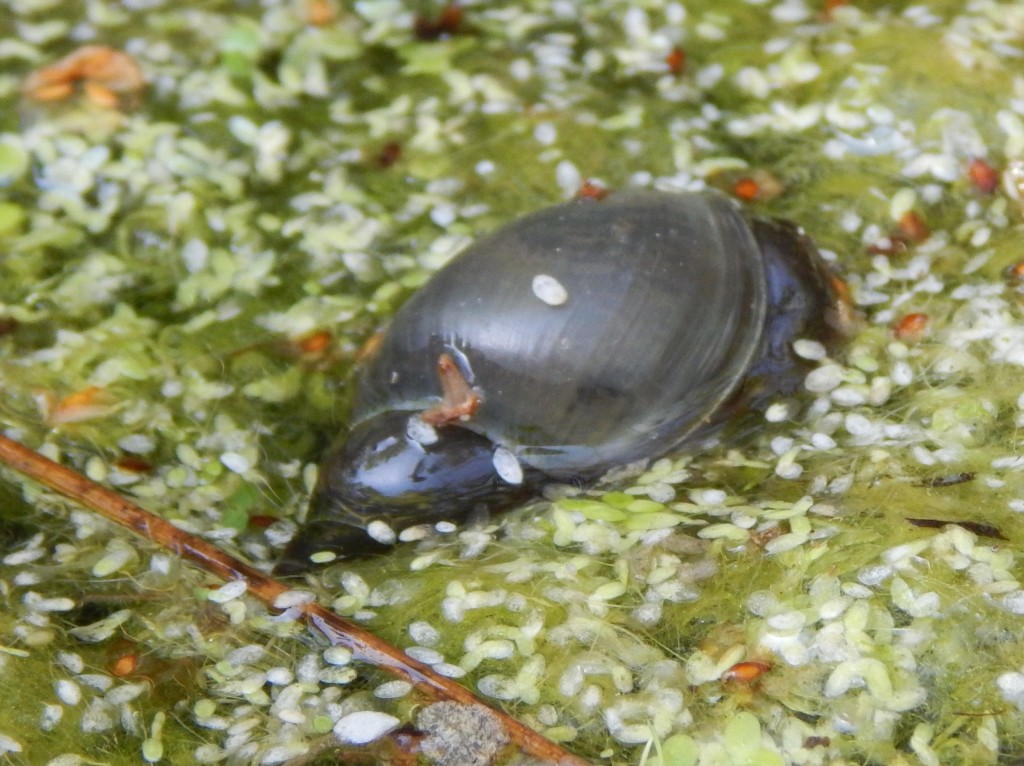

Like all snails they are hermaphrodite and can mate as male or female (not both at the same time.) I think the last picture above may be mating snails.
They are mainly herbivorous and eat algae and water plants, but will also eat small invertebrates and sometimes smaller pond snails.
Habitat and use
Lymnaea stagnalis is common throughout the Northern Hemisphere. It lives in freshwater – either slowly moving or standing water.
It is common and widespread over England and less common over the rest of the UK.
It has a relatively simple central nervous system and is widely used in experiments to study learning, memory and neurobiology.
Other Notes
You can, of course, search for pond snails in ponds but there are many places that make life easier for you by providing pond dipping opportunities for educational purposes and for entertainment. As you will know by now, I visit Slimbridge and they have easily accessible man-made ponds there that provide excellent environments for pond snails.
See also
There are only two other gastropods in this blog. We have already met [172] Roman Snail and other terrestrial snails. The other one, the Limpet, comes conveniently filed with a crustacean, [313] the Barnacle.

